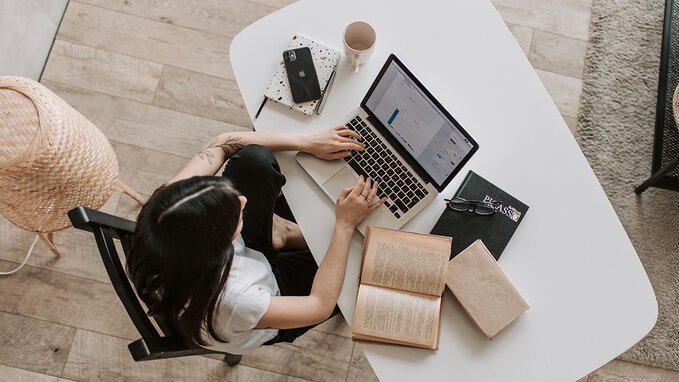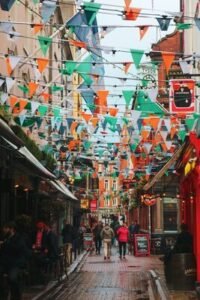Learning Gaeilge : an unexpected journey

Last week, I decided to start learning Gaeilge on my own. I figured that the lockdown was a great occasion to start. Gaeilge is an important part of the Irish culture, so I was curious about it and I felt ready to tackle this challenge.
I was wrong. But no spoilers.
To better understand my experience as I tried to learn Gaeilge, I should write a bit about myself. I am a French graduate in Linguistics, and I have learned some basic knowledge, or more, of English, German, Italian, Latin and Arabic. I felt confident about Gaeilge.
Check out more like this :
A brief history of the Irish Language
The evolution of global languages
Top 10 foreign languages spoken in Ireland
I turned to Youtube to grasp the basics of the language and learn more about the construction and grammar. I was delighted to hear that there was some French in Gaeilge, or at least Norman French. I thought “piece of cake !”, and again, I was wrong.
The first thing I learned was that it is not Gaelic I am learning. It is Irish. An important difference, especially if you plan to stay in Ireland. I learned about the three dialects (Munster, Connacht and Ulster), and the fact that even though Irish is a required subject in school, it is still an endangered language.
As a former Linguistics student, I wanted to know about the construction before the vocabulary. Linguistics is a science, and a language can be seen as a complex mathematical formula. There are rules, right places, some things work together and some don’t. To efficiently learn how to use the language, one must understand how the language works. Easier said than done. It is also why it is better to teach a language to children; they absorb the knowledge without having second thoughts on why it is the way it is. We have all learned our mother tongue naturally, then studied it in class and realized that there was some kind of logic behind it. No language is truly ever mastered, but once you feel comfortable speaking, reading and listening to that language, most of the work is done.
I started listening naively to an explanation of broad vowels (A, O, U) and slender vowels (E, I), and how it influences the way the other letters are going to be pronounced. Okay. Complicated, but I could still follow that. It shifted toward numbers. That promised to be useful. Yet, why be simple, when you can have disjunctive numbers, non-human use numbers, human use numbers and ordinal numbers.

The disjunctive numbers were close enough to French. By that, I mean that if I had to guess what number it is, between one and ten, I would have had at least a couple right. The other type of numbers however is another story. How do you go from dό to beirt to dhá ? All of that to say two, or the second. That was my first doubt about the simplicity of learning Irish. It was also my first why ?!
Then, the speaker talked about verbs. And conjugations. The two conjugations. I supposed that one would be present, and the other something else. No. Both present and it was without counting irregular verbs. After doing some digging, I found out that it depended on the length of the verb. One syllable ones are the first conjugation, the rest are the second.
Further down the presentation, I realized that like German or Latin, Irish has cases. Great. That was when I realized that Irish might be the most difficult language I had ever learned. When you speak French and English, Latin and German are not that far. Irish sounds like a world on its own. Dante wrote “Abandon all hope, ye who enter here”. True, he was talking about the gate of Hell, and I am being dramatic, but I felt hope and motivation leave me for a minute. Nevertheless, I am nothing if not stubborn. I kept going.
The next video taught me greetings in Irish, which is always useful. If I was to meet you, I could butcher a Conas atà tú, and answer Tà mè go maith or Nil mè go maith, depending on the mood.
Now, is a language really a language if there isn’t a Duolingo lesson about it? Probably, but still. I wanted to have the full at-home-on-my-own experience, so I started a Duolingo lesson. Turns out, thanks to the few videos I watched before, I already had some understanding of Irish. I recognized bèan easily, even though I still don’t understand when or why it takes an h from time to time.
I am now able to say essential things such as Is bèan mé (I am a woman), or Ithim ùll (I eat an apple). Because I am a proud French woman, I also know arán, which is bread. Next, I will learn cheese, and I shall be able to survive everywhere in Gaeltacht, the Irish speaking area.

I will keep on learning Irish, but after those few days and some amount of research, I came to a few conclusions when it comes to learning Irish on my own. Is it possible? Yes. You can find anything and everything online, and there are resources on Irish for free. Is it efficient? No. If I keep on going, I will be able to recognize words, and maybe translate a few sentences, but never will I be able to speak Irish without a teacher or practice. If you are just curious about Irish, Duolingo and the internet are good enough. If you are serious about learning and speaking Irish, find yourself a teacher.
Now, was it worth it? ABSOLUTELY. It is true that even in Ireland, not that many people speak Irish on a daily basis, and that I can spend a lifetime there without having to ever speak Irish. However, learning Irish is understanding the culture and traditions of Ireland better. It is being part of a community and helping a language stay alive. Learning another language is always an experience. Whether it is for a day or a lifetime, you can only get richer by stepping outside of your comfort zone and learning a bit more about others.
Go raibh maith agat as seo a léamh !
If you want to follow my footsteps :
Related
Alexiane Bacle
Alexiane is a French teacher turned writer. Life enthousiastic, book lover, musician at heart. Happiness is in the little things.